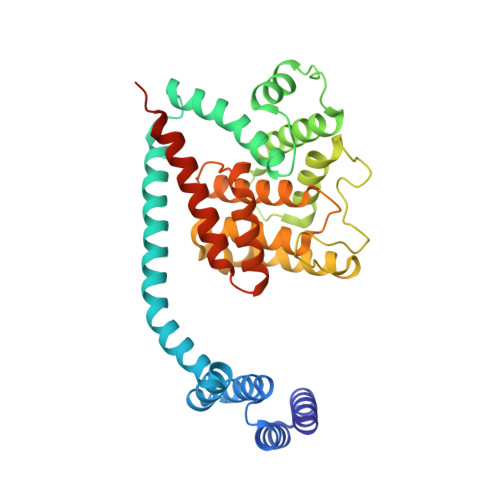An oligomeric state-dependent switch in the ER enzyme FICD regulates AMPylation and deAMPylation of BiP.
Perera, L.A., Rato, C., Yan, Y., Neidhardt, L., McLaughlin, S.H., Read, R.J., Preissler, S., Ron, D.(2019) EMBO J 38: e102177-e102177
- PubMed: 31531998
- DOI: https://doi.org/10.15252/embj.2019102177
- Primary Citation of Related Structures:
6I7G, 6I7H, 6I7I, 6I7J, 6I7K, 6I7L - PubMed Abstract:
AMPylation is an inactivating modification that alters the activity of the major endoplasmic reticulum (ER) chaperone BiP to match the burden of unfolded proteins. A single ER-localised Fic protein, FICD (HYPE), catalyses both AMPylation and deAMPylation of BiP. However, the basis for the switch in FICD's activity is unknown. We report on the transition of FICD from a dimeric enzyme, that deAMPylates BiP, to a monomer with potent AMPylation activity. Mutations in the dimer interface, or of residues along an inhibitory pathway linking the dimer interface to the enzyme's active site, favour BiP AMPylation in vitro and in cells. Mechanistically, monomerisation relieves a repressive effect allosterically propagated from the dimer interface to the inhibitory Glu234, thereby permitting AMPylation-competent binding of MgATP. Moreover, a reciprocal signal, propagated from the nucleotide-binding site, provides a mechanism for coupling the oligomeric state and enzymatic activity of FICD to the energy status of the ER.
- Cambridge Institute for Medical Research, University of Cambridge, Cambridge, UK.
Organizational Affiliation:



















